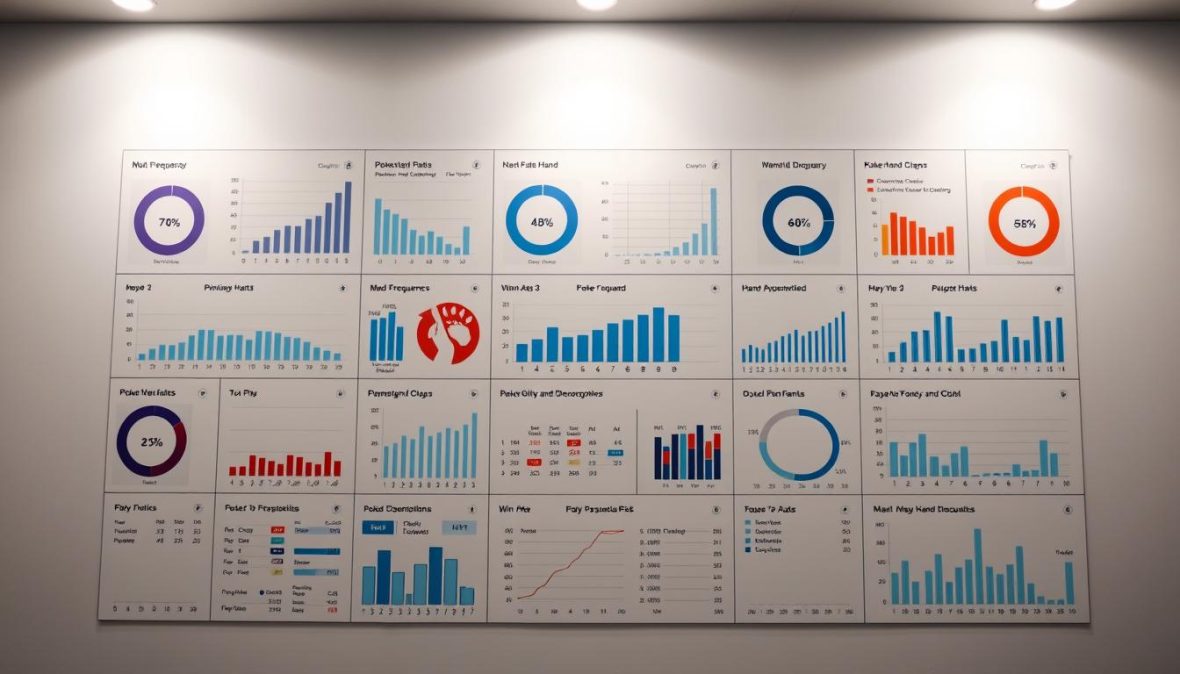Poker Hand Data: Graphs, FAQs, and Evidence-Based Guide

Pro poker players analyze over 169 unique hand combinations using advanced data tracking tech. This scientific approach transforms poker from chance to strategic mastery. Here’s a quick TL;DR:
- Poker hand databases offer critical insights for strategic gameplay
- Data-driven methods can turn average players into calculated strategists
- Understanding statistics and probabilities is key to improving poker skills
- Visual tools like graphs help interpret complex poker data
Understanding Poker Hand Databases
Poker hand databases are powerful tools that record every detail of gameplay, including:
- Hand histories
- Betting patterns
- Win/loss ratios
- Opponent tendencies
These databases allow players to analyze trends, spot weaknesses, and develop data-driven strategies. Modern AI solvers can process vast amounts of hand data, offering insights that were previously unattainable.
Data is the new poker chip – invest wisely, and watch your strategy grow.
Overview of Common Poker Hands
Understanding poker hand rankings is crucial for strategic play. Here’s a quick rundown from highest to lowest:
- Royal Flush
- Straight Flush
- Four of a Kind
- Full House
- Flush
- Straight
- Three of a Kind
- Two Pair
- One Pair
- High Card
The rarity of hands plays a significant role in strategy. For example, the odds of getting a Royal Flush are about 1 in 649,740 hands.
Analyzing Poker Hand Data
Key statistics for poker analysis include:
- VPIP (Voluntarily Put Money in Pot)
- PFR (Pre-Flop Raise)
- Aggression Factor
- Continuation Bet Frequency
These metrics help players understand their own tendencies and those of their opponents, leading to more informed decision-making.
Visualizing Poker Hand Data with Graphs
Graphs transform complex poker data into easily digestible visual information. Common types include:
- Heat Maps: Show frequency and performance of hand ranges
- Distribution Curves: Illustrate probability of different outcomes
- Decision Trees: Demonstrate strategic decision points
Learning to interpret these graphs can significantly enhance a player’s strategic understanding.
Tools for Collecting and Analyzing Poker Data
Popular software for poker analysis includes:
- PokerTracker 4
- Holdem Manager 3
- Poker Copilot
Mobile apps have also revolutionized on-the-go data tracking and analysis.
Utilizing Poker Hand Data for Predictions
Data-driven predictions in poker consider factors such as:
- Player positioning
- Stack sizes
- Historical betting patterns
- Psychological tells
Advanced techniques like Game Theory Optimal (GTO) strategies have shown to increase winnings by up to 37% compared to traditional approaches.
Evidence-Based Strategies for Winning at Poker
Successful data-driven strategies involve:
- Analyzing historical hand performance
- Identifying statistical probabilities
- Recognizing opponent patterns
- Adapting strategies dynamically
Remember, while data is crucial, it should complement rather than replace poker instinct and real-time decision-making.
Conclusion: Mastering Poker with Hand Data
Mastering poker through hand data analysis requires consistent practice, ongoing learning, and the ability to adapt. Use data as a guide, but remain flexible in your approach. Keep exploring resources, studying hand histories, and refining your strategies.
For your next steps:
- Invest time in understanding statistical nuances
- Practice consistently and treat each session as a learning opportunity
- Stay curious and humble in your poker journey
Remember, the most successful players view data as a flexible tool in their overall poker strategy.

